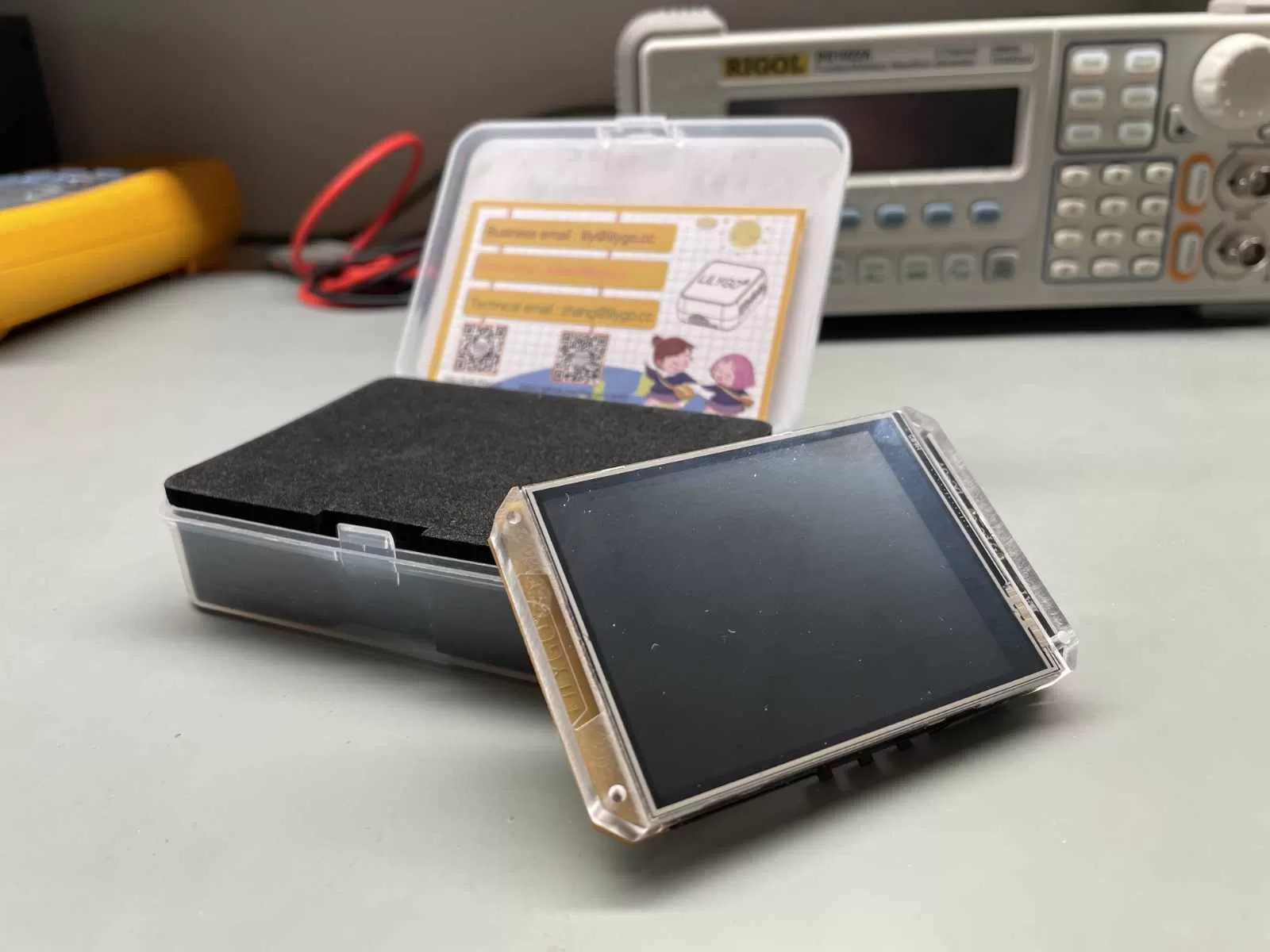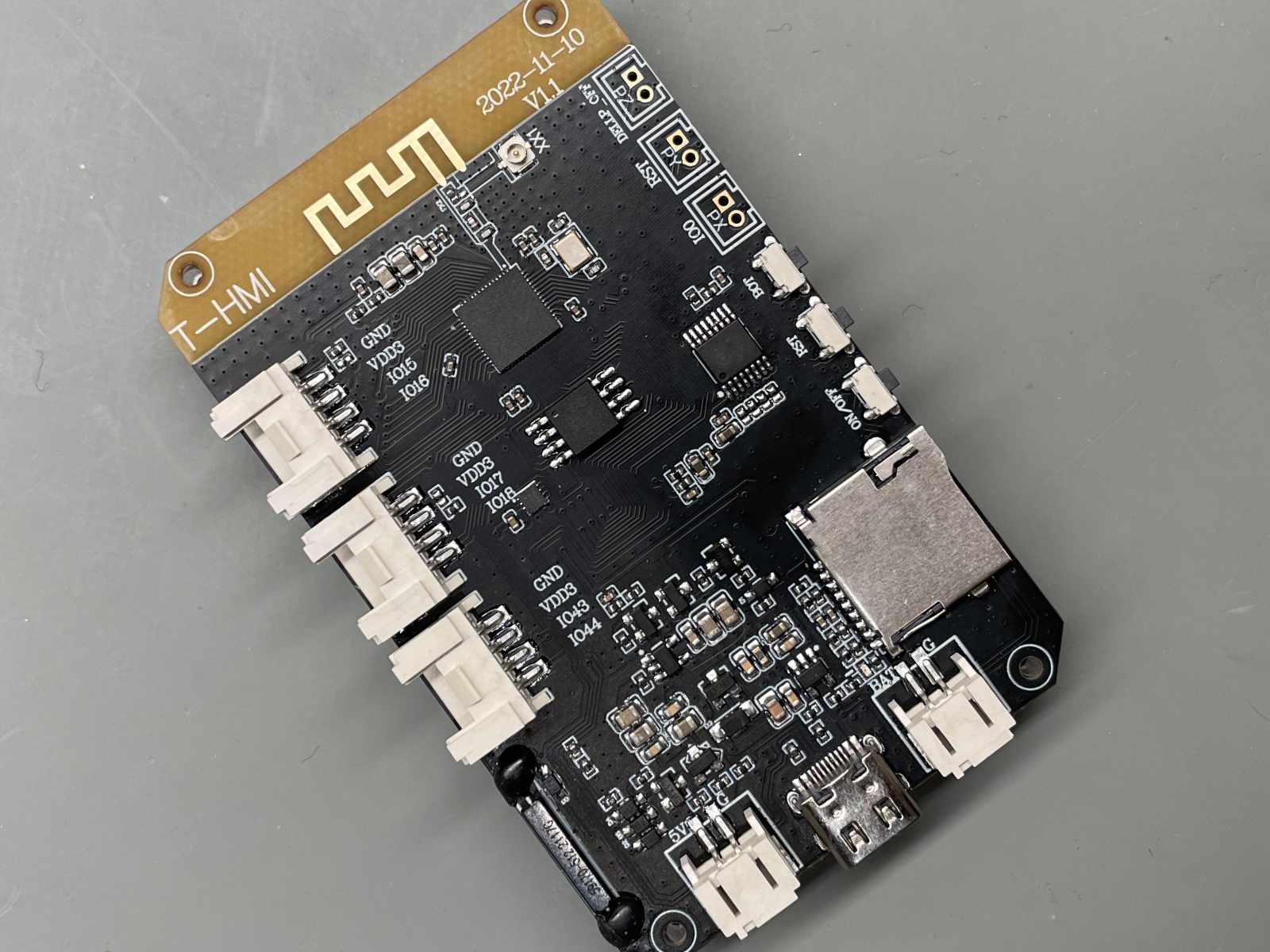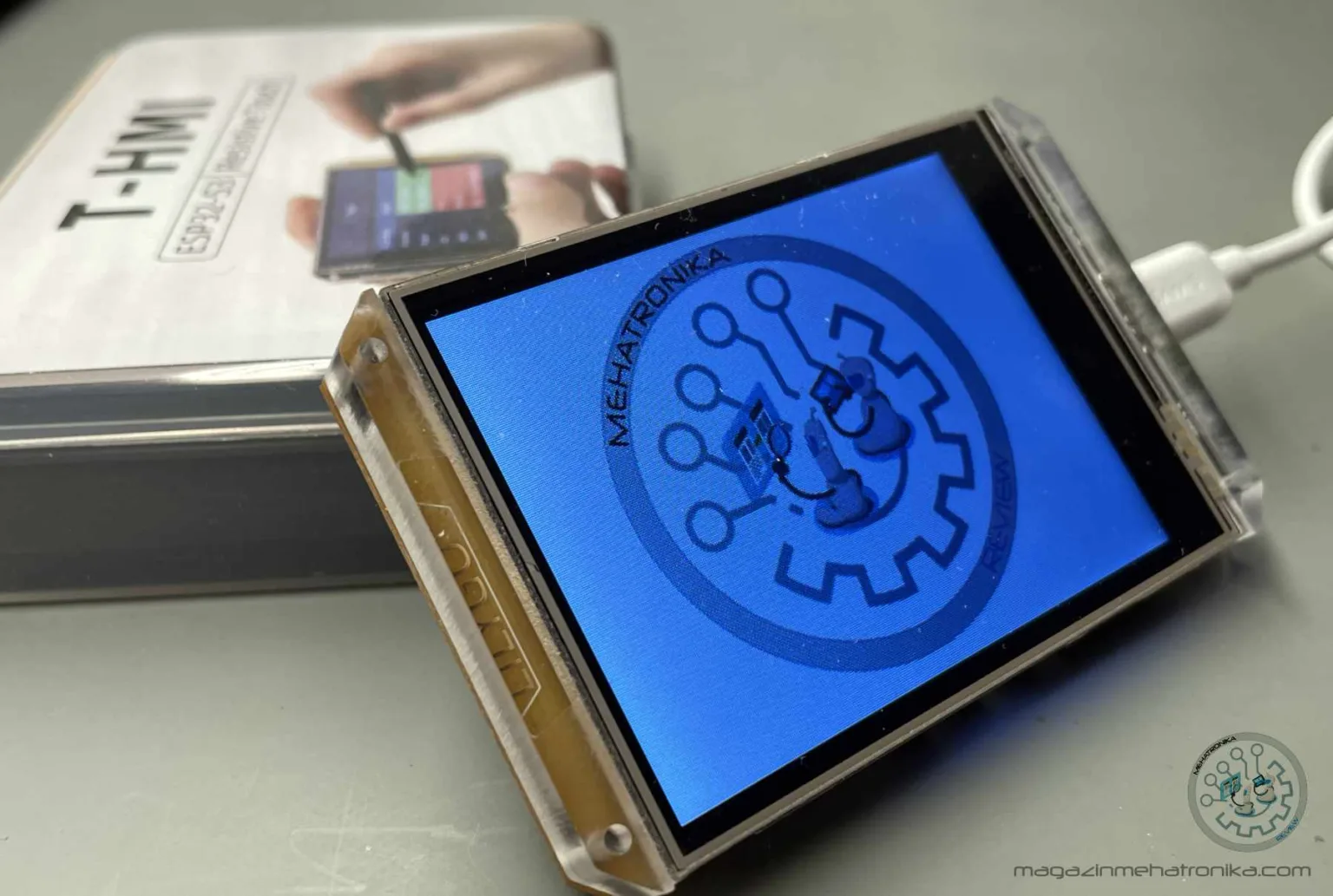LilyGO T-HMI
LilyGO T-HMI is an economical and compact MCU development kit with a screen and Wi-Fi/Bluetooth 5LE connectivity. It looks like a great solution for both prototype development and STEM education thanks to its plug-and-play hardware design and decent software support.
Pros
- Economical and compact
- WiFi & BT 5LE
- Modern architecture
- Good GitHub support
Cons
- Only one Grove and one battery cable
The LilyGO T-HMI has landed before us, packed in a tidy semi-transparent plastic box, surrounded by black cushioning foam. This tiny dev board is based around an ESP32-S3R8 MCU and a 2.8” resistive TFT touchscreen with a 240 x 320 resolution. The set also includes a small plastic stylus (very similar to the one used on some older Nintendo handheld consoles) and a pair of cables: one for connecting a 5V battery and one for connecting a Grove sensor (Grove is the name of Seeed Studio’s plug-and-play system of sensors and peripherals).
Before continuing, we’d like to thank the manufacturer for providing us with a review unit.
Hardware
At the heart of the system lies the Espressif ESP32-S3R8, a dual-core Xtensa LX7-based MCU, featuring 16 MB of flash and 8 MB of PSRAM. Cheap yet versatile and powerful, ESP32 chips are becoming mainstream in kits like these.

Taking a look at the board itself, we can see the frontside completely taken up by the touch panel and a clear plastic bezel which offers mounting holes. We didn’t expect mind-blowing image fidelity from the inexpensive little display, naturally, but we were satisfied with its performance. It certainly is more than fit for the purpose. Perhaps our only real criticism is the choice of a resistive panel. Compared to now standard capacitive screens, resistive ones utilise a flexible plastic upper layer which has to bend during use and is inherently more prone to damage than a glass layer. Resistive screens do have some upsides, mostly regarding their ease-of-manufacture (which translates to lower costs) and their non-reliance on capacitive pointing devices, which enables the use of rather simple plastic styli.
Flipping the board over, however, reveals a set of connectors: three Grove ports, one SD card slot, one USB-C connector for powering the board and data transfer and two connectors for alternate power sources. Of these two, one’s meant for a battery and one for a standalone 5VDC power supply unit. The MCU features built-in Wi-Fi and Bluetooth 5 LE, and there’s also a PCB antenna for these two. For more demanding connectivity scenarios, there’s also a U.FL connector for attaching external antennas.
Boot, Reset and Power buttons are also present, and certainly better than jumpers often found on development kits. Interestingly, each of these three also has a set of corresponding solder pads in case a project requires custom locations for these buttons (eg. if the T-HMI is mounted inside a chassis).

Finally, there’s also a magnetic reed switch. Its inclusion was a bit of a surprise for us, but we can see it being useful in some projects, especially given its logical mounting position, right along the left side of the board.
The build quality of the whole unit is pretty solid, with well-labelled and easy-to-access ports.
Software
LilyGO’s GitHub contains all the software resources required for developing apps for the T-HMI. This includes pretty decent documentation, as well as the library files themselves and several sets of examples for both of the officially supported development environments: Arduino and PlatformIO.
All of the provided software works, including all of the adapted examples from the board support libraries and some external ones, too, which is sadly still not the case with every development kit.

Conclusion
One might say that the LilyGO T-HMI isn’t much more than a development kit with a screen, but we believe that a fundamentally different approach is at play here. A standard development kit offers a wealth of GPIO and is meant for prototyping at a low level, allowing for the most flexibility. What LilyGO products try to offer is a sleek, integrated, application-specific platform which is just a step away from a finished product. Offering a screen, Wi-Fi, Bluetooth, an SD card reader, a battery connector and three Grove ports, it’s meant to simplify and streamline hardware development and enable project creation with minimal electronics work. All that’s left to do is to pack it up in a custom 3D printed box, wire up any external hardware, and end up with a functional prototype.
Perhaps the most impressive is the $17.99 price. This is a generous deal, and you’d be hard-pressed to find the components separately for less. This is especially appealing to hobbyists or educational institutions buying kits like these in bulk.
Finally, the LilyGO T-HMI isn’t just good for prototype development, but is also a wonderful STEM tool for introducing students to ESP32 embedded development and C/C++ coding.
More information: LilyGo page
- Banana Pi CanMV-K230D-Zero review - 06/24/2025
- Mehatronika interviews: Stefan Engleder - 06/10/2025
- Youyeetoo X1 review - 04/09/2024
